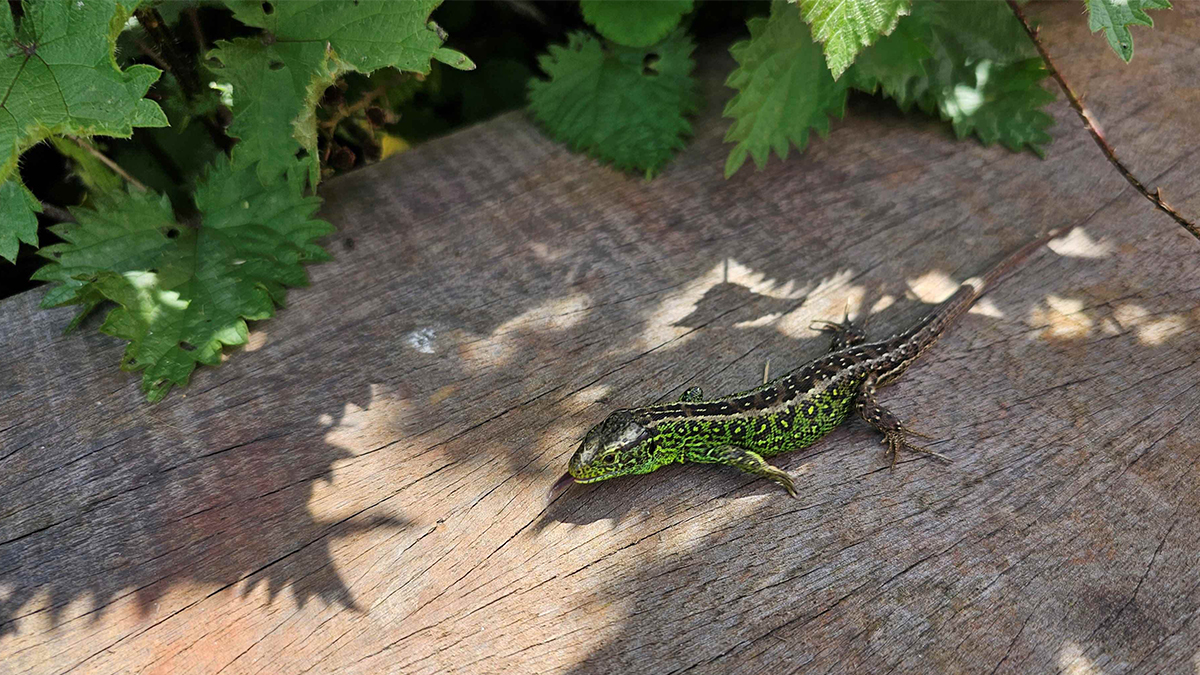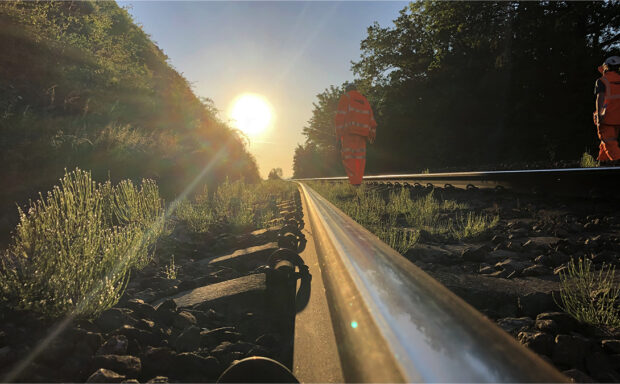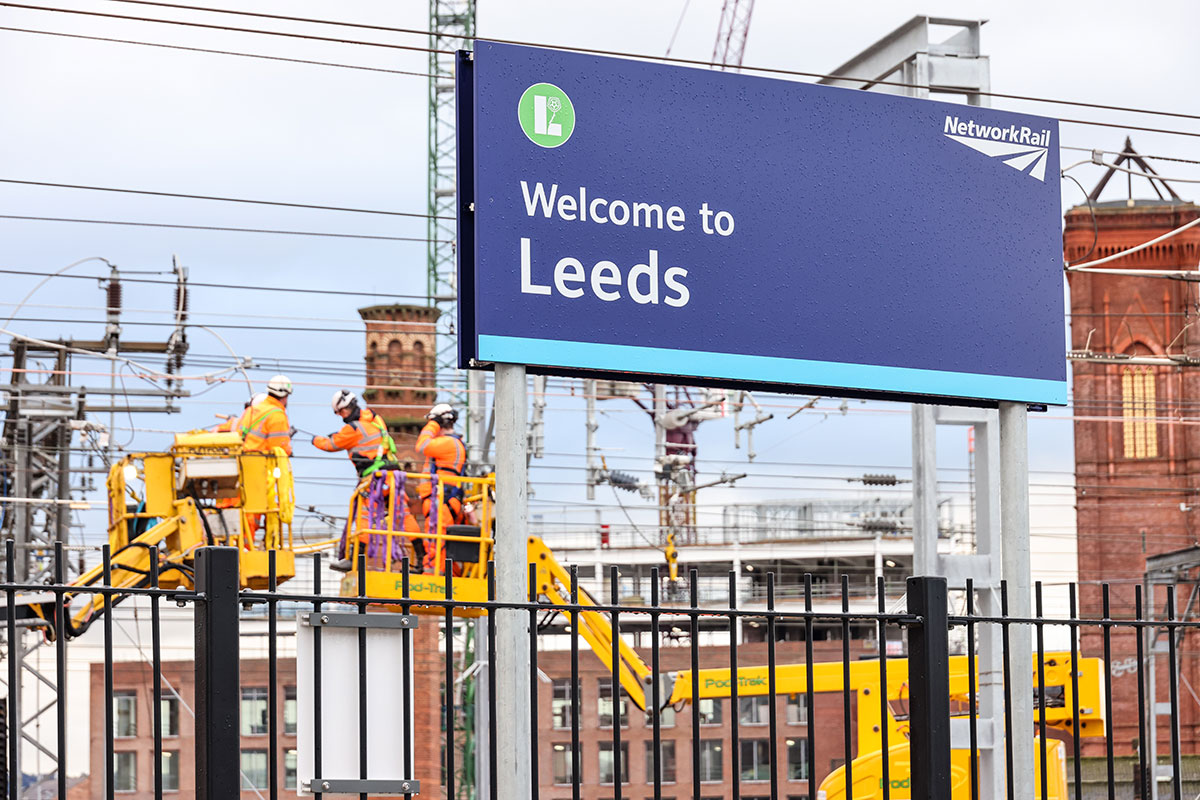Our railway is home to several types of reptiles including snakes and lizards. Protecting these scaly neighbours is an important part of our work in creating a more sustainable, more environmentally friendly and an even more reliable railway for all.
Natural engineering
Managing and enhancing the natural environment is an essential part of our work to create a sustainable railway – but it’s actually about more than that.
Working in harmony allows us to not only look after our natural neighbours, but plays a big part in keeping the railway running smoothly and safely.
The lineside habitat alongside our 20,000 miles of track plays an important role in connecting fragmented wildlife habitats across our countryside. Find out more here.
Meanwhile, the 10m trees along our railway can help with much needed carbon capture.
Moreover, working with nature in this way helps keep our railway moving safely.
For example, looking after certain plants and tree species in an area can help reduce the risk of flooding on the tracks as they help the ground absorb more water.
We even ‘veteranise’ many of our trees that we cut down close to the track to make them safe for trains and still act as great habitats for creatures.
Dr Neil Strong, a biodiversity strategy manager at Network Rail, said: “By considering our biodiversity, we can leave a sustainable and positive legacy for future generations.”
Rail Reptiles
We have processes in place to manage ecological risk including carrying out ecological risk assessments for our work. The assessments check and consider the potential impact of our work on the natural environment.
During such assessments, we may find that reptiles are either potentially, or definitely present.
When this happens, we put appropriate measures in place to protect them. Such measures might be:
- managing vegetation during the summer months to persuade the reptiles to move out of the works on their own – for example, removing the plants that they might otherwise use as their habitats
- planning our work to avoid disturbing the potential areas that reptiles may be using during their hibernation season
- capturing and moving the reptiles to an alternative safe area
- enhancing the sites by building hibernacula – or natural shelters – made up of rocks, logs and grass, to make great hibernation or resting spots for them and other small animals.
We also carry out awareness training so our staff are aware of the possibility of reptiles around the railway and know what to do if they are found.
Leo Hughes, an ecologist at Network Rail, said: “We’re committed to supporting the conservation of reptiles though responsible management practices.”
Sand lizards in Wareham
The discovery of sand lizards near a railway station in the south of England is an example how we strive to protect the reptiles on our land. We first recorded a small number of them on a disused track bed on the lineside around Wareham Station in Dorset in 2013.
Sand lizards are Britain’s rarest lizard and can only be found in the south and west of England and at a few sites in Wales. Subsequently, they are a conservation priority in England and Wales and are strictly protected under British law.
To avoid harming these rare reptiles, we moved them to a specially created site in 2014. This site was known as Old Bay Platform – an old, disused siding beside Wareham station at the Wareham Depot.
Creating an environment to help them thrive
Since then, we’ve worked with train operator South Western Railway to transform Old Bay Platform into a suitable environment for the sand lizards. We’ve created a mosaic of scrub, open grassy areas and sandy patches which sand lizards are known to prefer. These measures have proved successful and the sand lizard population here has grown since.
The population of smooth snakes (which are Britain’s rarest reptiles) has also increased around Wareham as a result. They were recorded on the Wareham Depot area for the first time in 10 years in October 2023. We were surprised by this discovery because the nearest heathland where they usually live was over one km distance away.
The success of this programme has led to Old Bay Platform being classified as a ‘railway nature site’. We sometimes give areas of high biodiversity value this title to help us better manage the protection of the biodiversity there.
Leo said: “Our work around Wareham Station shows how managing habitats sympathetically for reptiles can benefit and enhance the area for rare reptiles. It also helps build our understanding of how unusual habitats (such as the railway lineside) can be important refuges to these threatened species.”
At Network Rail, we’re dedicated to striking a balance between creating a safe and reliable railway and protecting the environment. Work like Old Bay Platform is an important part of our mission to create a railway that benefits both the people and the natural world.




